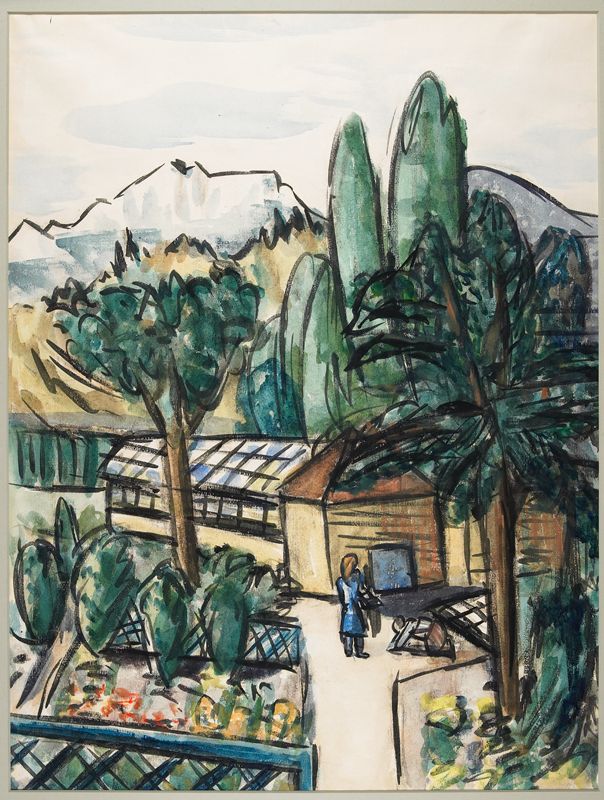This week I will be in New Hampshire with my family on our annual summer trip to Little Lake Sunapee, where my husband’s family has vacationed every August for more than 60 years. Time stands still at “the Villa,” the New England resort we visit. We play shuffle board and bingo, go on mountain picnics, dance the “Alley Cat” at the kiddie dance, and drink gin and tonics on the wraparound porch.
The one perceptible change over the years is the length of our family holiday. Today, we seem lucky to get a full week away from our busy lives, but when my husband was a child, his family went for two weeks without fail, and when his mother was young she sometimes went for four. Sounds pretty relaxing, I know, but it might also have been productive. Daniel Levitin, in a recent New York Times article, argues for the health and efficacy of “true vacations without work”—that is, leaving email behind and dedicating time to naps and contemplation. He cites research that indicates that “daydreaming leads to creativity.”
In the exhibition “Marks of Genius,” on view at the Minneapolis Institute of Art, a number of drawings were executed by artists on vacation. All would seem to testify to the link between relaxation and inspiration.

Georgia O’Keeffe, “Blue Sea with Rocks,” 1922, pastel. Promised gift of Alfred and Ingrid Lenz Harrison
The deep blue ocean in Georgia O’Keeffe’s pastel Blue Sea With Rocks beckons visitors to lean in for a closer look. O’Keeffe, born in the small town of Sun Prairie, Wisconsin, in the rolling plains of the Upper Midwest, had a talent for capturing the distinctive character of a region—from the burnt desert canyons of the American Southwest to the sleek skyscrapers of New York City. In the 1920s, she took several summer trips to York Beach, Maine, to escape the heat and crowds of New York City. The spectacular Blue Sea with Rocks is an inviting portrait of a warm summer day on the coast.

Max Beckmann, “Bavaria,” c. 1934, watercolor with touches of pastel. Bequest of Margaret McMillan Webber, 51.36
Hanging alongside the O’Keeffe pastel is Max Beckmann’s sunny watercolor Bavaria. While the lush gardens appear almost tropical, the title reminds us that we are in fact in Germany.
The work depicts Villa Kaulbach, the hillside home of Beckmann’s in-laws. In the early 1930s, the artist and his wife, Mathilde “Quappi” von Kaulbach, traveled there often, seeking refuge from the political upheavals unfolding in Germany with the rise of Hitler. Around this time, Beckmann’s art was declared degenerate by the Nazis—for its social commentary but also its modern style. Hundreds of his works were seized, along with those of many other groundbreaking German artists, and he lost his teaching position at the Städel School in Frankfurt. Before emigrating to Holland in 1937 (and ultimately to the United States), he found inspiration in these summer trips to the Bavarian Alps.

Élisabeth Louise Vigée-LeBrun, “View of the Lake of Challes and Mont Blanc,” 1807–1808, pastel on blue green wove paper. Gift of the Friends of the Institute, 2007.51
Sometimes it is the transient tourist who can best capture the special qualities of a place. The well-traveled French artist Élisabeth Louise Vigée-LeBrun spent the summers of 1807 and 1808 in Switzerland, where the dramatic alpine landscape proved exceptionally stimulating. Following an excursion to view Mont Blanc, gleaming brightly at the top of the resulting pastel (at right), she wrote of the play of light on the landscape: “I was seized with a desire to paint this reflected light; quickly I snatched up my pastels.” Her diary records “about a hundred pastel landscapes of Switzerland painted during my travels,” yet lamentably just six are known today, including this work rediscovered in 2006.
The New Yorker John Marin visited Maine every year, spending the summer of 1921 in Stonington, a picturesque fishing village on Deer Isle.
There he executed The Sea, Maine. It is a plein-air interpretation of the island’s rugged shoreline—its rocky coast, rough blue sea, and windswept pines. Marin often turned to such untamed landscapes as subjects for his modernist style, the wildness matching the energy of his depictions. Using gestural strokes, bold colors, and delicate washes, he evokes the essential forms of the landscape.

Reginald Marsh, “Coney Island Bathers,” c. 1946, Chinese ink and watercolor. Bequest of Felicia Meyer Marsh, 82.103.1
In contrast to the reverie of secluded retreats is the rowdy world of Coney Island, where Reginald Marsh spent his summer vacations. His calendars from the 1940s, archived at the Smithsonian, document numerous trips to New York’s beaches, which yielded countless drawings like this one. As an observer, Marsh took pleasure in the anonymity that urban life afforded him. Yet his muscled and curvaceous swimmers spring as much from his imagination and knowledge of art history (hello, Peter Paul Rubens), as they do from his study of live models.

“Sunset Over Mt. Sunapee” by Sunapee artist Susan Parmenter was displayed last year in a national juried exhibition organized by the Pastel Society of New Hampshire.
If I tried to draw Little Lake Sunapee, and maybe I will, I would probably make a watercolor of the sunsets. The mountainous, wooded landscape produces a sky of infinite shades of purples and pinks. The cool palette is a stark and refreshing contrast from the warm, golden sunsets I grew up with here in the Midwest, and it never fails to send me daydreaming.


